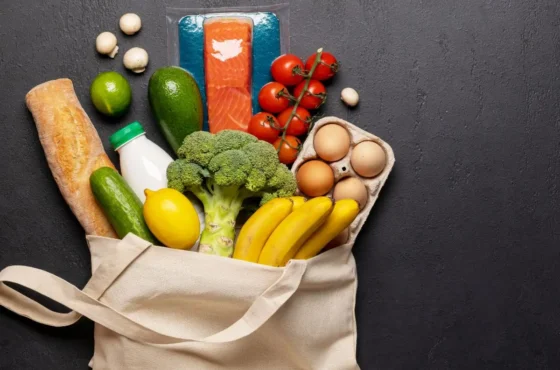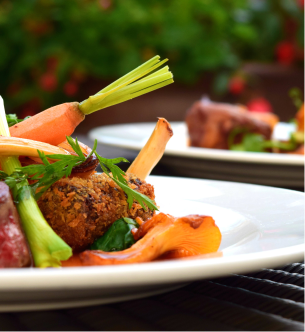Best laptop bag for travelling.
Culinary Journeys: Packing the Ideal Travel Bag for Food Tours
Traveling the world and experiencing its diverse cuisines is one of the most exciting and enriching ways to explore new cultures. Culinary tourism, or food tourism, is becoming increasingly popular as food enthusiasts seek out the best dishes, street foods, and dining experiences in far-flung destinations. From savoring the freshest sushi in Tokyo to tasting spicy curries in India, food tours are a gateway to understanding a place’s history, customs, and daily life. But embarking on a culinary journey requires more than just an adventurous palate; it also requires careful planning and packing.
When it comes to food tours, whether in bustling cities or rural landscapes, packing the right travel bag is key. Not only do you need to consider your personal needs as a traveler, but you must also pack essentials for a seamless and enjoyable culinary experience. From snacks for the journey to organizing essential documents, every item should be carefully chosen to enhance the food tour experience. Additionally, the right bag can ensure that your travels are as smooth as the perfect bowl of ramen.
In this article, we will explore how to pack the ideal travel bag for a food tour. We’ll touch on the essential items you should bring, how to keep your belongings organized, and the importance of choosing the right bag for a culinary adventure. Plus, we’ll discuss how to combine practicality with style, especially when you want to find the best laptop bag for travelling.
The Essentials of Packing for a Food Tour
When preparing for a food tour, packing efficiently is crucial to ensure you can enjoy your culinary adventure to the fullest. Unlike other types of travel, food tours often require a more strategic approach to packing, especially if you plan to visit multiple destinations with varying climates and dining experiences. Whether you’re traveling internationally or embarking on a domestic culinary journey, the following items should be part of your essential packing list.
1. Reusable Water Bottle
Staying hydrated is essential, especially if you plan on indulging in rich, flavorful dishes and street food throughout the day. Bringing a reusable water bottle not only helps keep you hydrated but also reduces your environmental footprint by avoiding single-use plastic bottles. Many travel bags, especially those designed for food tours, come with specialized compartments to hold water bottles securely, ensuring easy access when you need it most.
2. Comfortable Footwear
Culinary tours often involve a lot of walking, from strolling through food markets to exploring local eateries or wandering through food festivals. Comfortable, breathable shoes are essential for ensuring your feet stay fresh and ready for long days of food exploration. Look for footwear that is supportive and easy to walk in, as you may find yourself walking for miles in search of the best food in town.
3. Portable Snacks
While food tours are all about tasting new dishes, it’s always a good idea to pack a few snacks for when you’re between meals or exploring locations that are off the beaten path. Granola bars, dried fruits, or crackers are great options that take up minimal space in your bag. If you’re traveling in a region with limited food options, packing your own snacks ensures you don’t go hungry while out and about.
4. Travel Journal and Pen
A travel journal is an essential tool for any culinary traveler. During your journey, you’ll undoubtedly want to jot down notes about the dishes you’ve tasted, the chefs who prepared them, and the overall dining experience. A travel journal allows you to capture memories, recipes, and tips that you can refer back to later. Having a pen handy is just as important, so you never miss the chance to record a memorable meal or food discovery.
5. Camera or Smartphone
Food tours are an opportunity to not only taste incredible food but to capture the beauty of dishes, food markets, and the culinary culture of the region you’re visiting. Whether you’re using a professional camera or your smartphone, having a device to photograph and document your food experiences is key. You’ll want to snap pictures of the vibrant street food scene, intricate plating at fine dining establishments, and the local ingredients that make up each dish.
6. Antibacterial Wipes or Hand Sanitizer
In food tourism, cleanliness is essential, especially when tasting street food or eating in local establishments that may not always have the best facilities. Antibacterial wipes or hand sanitizer help ensure your hands are clean before and after meals, especially when you’re in regions where hand washing facilities may not always be readily available.
7. Travel Insurance and Emergency Medical Kit
Culinary tourism can be an adventure, but it also comes with its own risks. Whether it’s a food allergy, a digestive upset, or an unfortunate accident, it’s essential to have travel insurance and a small emergency medical kit with you. Items like over-the-counter medications, allergy relief, and other health essentials should be included in your bag to ensure you’re prepared for any situation that may arise.
Choosing the Best Travel Bag for Food Tours
Selecting the right travel bag is one of the most crucial decisions you’ll make for your food tour. Your bag needs to be spacious enough to carry all your essentials but compact and easy to carry for long days of exploration. A well-chosen bag can make your travels easier, ensuring that you’re comfortable and organized while navigating bustling markets, busy restaurants, and local food stalls.
1. Backpack vs. Roller Bag
When deciding between a backpack and a roller bag, think about the type of culinary journey you’re embarking on. A backpack is ideal if you plan to do a lot of walking or navigating busy streets. Backpacks are hands-free, allowing you to carry your food and drink, camera, and other essentials while keeping your hands free for taking photos or handling food. Plus, backpacks tend to be more versatile, allowing you to easily maneuver through crowded markets or narrow alleys.
On the other hand, a roller bag may be a better choice if you’re traveling in a more organized setting, such as visiting a luxury culinary resort or staying in a single location. Roller bags provide more structure and may offer more storage space, but they can be cumbersome on uneven or cobbled streets.
2. Compact, Travel-Friendly Bags
For food tours, it’s essential to choose a bag that is both functional and compact. Look for bags that are specifically designed for travel, with multiple compartments for organizing your gear. A food tour often involves carrying items like cameras, notebooks, and snacks, so a bag with various compartments and zippered pockets will keep everything easily accessible.
Some travel bags are designed with features such as water-resistant materials, lightweight frames, and anti-theft zippers, which are excellent for both security and convenience during your food exploration. Additionally, some bags even come with insulated compartments to store snacks or small food items you may pick up along the way.
3. Best Laptop Bag for Traveling
While a culinary tour is all about food, you may also need to stay connected to share your food experiences, write blog posts, or connect with fellow travelers. For those who work remotely or need to stay in touch with the world while traveling, finding the best laptop bag for traveling is a must. A travel-friendly laptop bag should be slim, lightweight, and have compartments to keep your laptop or tablet secure while also protecting it from food spills or rough handling.
Look for bags made with durable materials, such as water-resistant fabric or leather, that provide both functionality and style. A bag with padded compartments will ensure that your electronics are safe, even as you navigate the busy streets of a new city. Ideally, the best laptop bag for traveling should also be easy to carry and fit under the seat of an airplane or in overhead compartments, giving you the flexibility to travel hassle-free.
Packing Techniques for Food Tours
Now that you’ve chosen the perfect travel bag, it’s time to pack efficiently. Here are some tips to help you pack like a pro for your food tour:
- Use Packing Cubes: Packing cubes are great for keeping your clothes organized and easily accessible. They also help maximize space in your bag, which is essential when you’re packing multiple outfits for different types of culinary experiences.
- Roll, Don’t Fold: Rolling your clothes instead of folding them can save a significant amount of space in your bag. It also helps prevent wrinkles, ensuring that you look fresh even after a long day of food exploration.
- Create a Daily Essentials Kit: For easy access, pack a small pouch with your daily essentials: wallet, phone, camera, sunglasses, and any items you’ll need on a regular basis. This will prevent you from digging through your entire bag every time you need something.
- Pack for Flexibility: Since food tours can involve spontaneous discoveries, pack items that are versatile and adaptable. For instance, light layers can be added or removed depending on the weather, and shoes can be swapped for more formal dining experiences.
- Leave Room for Souvenirs: Whether you’re picking up artisanal spices, local snacks, or culinary tools, make sure to leave some space in your bag for food-related souvenirs. Many food tours involve bringing back unique ingredients or items, so having extra room will ensure you don’t need to sacrifice what you’ve purchased.
Conclusion
Packing for a food tour requires a blend of practicality and excitement. You’re not only traveling for food but for experiences that will create lasting memories and broaden your understanding of different cultures. The ideal travel bag should offer enough space for all your essentials while providing comfort and ease of access as you explore new culinary horizons.
Whether you’re packing a backpack, a roller bag, or even the best laptop bag for traveling, choosing the right bag for your food tour ensures that you’re prepared for whatever comes your way. Remember to pack smart, stay organized, and leave room for culinary surprises as you embark on your gastronomic journey across the world.
Find restaurants near tourist places





